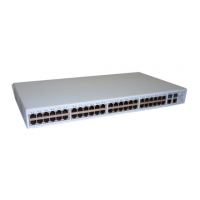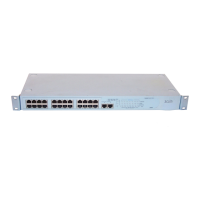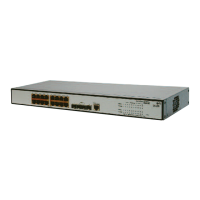Physical Features 9
The 802.1D standard specifies eight distinct levels of
priority (0 to 7), each of which relates to a particular
type of traffic. The priority levels and their traffic types
are shown in
Table 3.
Table 3 Priority Levels for Traffic Types
The traffic prioritization feature supported by the
Switch is compatible with the relevant sections of the
IEEE 802.1D standard (incorporating IEEE 802.1p).
Physical Features
Figure 1 shows the front and rear panels of the
Switch. The numbers in this diagram refer to num-
bered sections in “Front Panel” on page 9 and “Rear
Panel” on page 12.
Figure 1 Front and Rear Panels
Front Panel
The front panel of the Switch contains a series of indi-
cator lights (LEDs) that help describe the state of vari-
ous networking and connection operations.
(1) PoE LEDs
These LEDs show whether individual ports are provid-
ing power.
(2) 24 RJ-45 Ports
WARNING: RJ-45 Ports. These are shielded RJ-45
data sockets. They cannot be used as standard tradi
-
tional telephone sockets, or to connect the unit to a
traditional PBX or public telephone network. Only
connect RJ-45 data connectors, network telephony
systems, or network telephones to these sockets.
Priority Level Traffic Type
0 Best effort
1 Background
2 Standard (spare)
3 Excellent effort (business critical)
4 Controlled load (streaming multimedia)
5 Video (interactive media), less than 100
milliseconds latency and jitter
6 Voice (interactive voice), less than 10
milliseconds latency and jitter
7 Network control reserved traffic
Status Meaning
Green Power is being delivered
Off No power is being delivered
1
2
9
5 10 6
7
4
8
3

